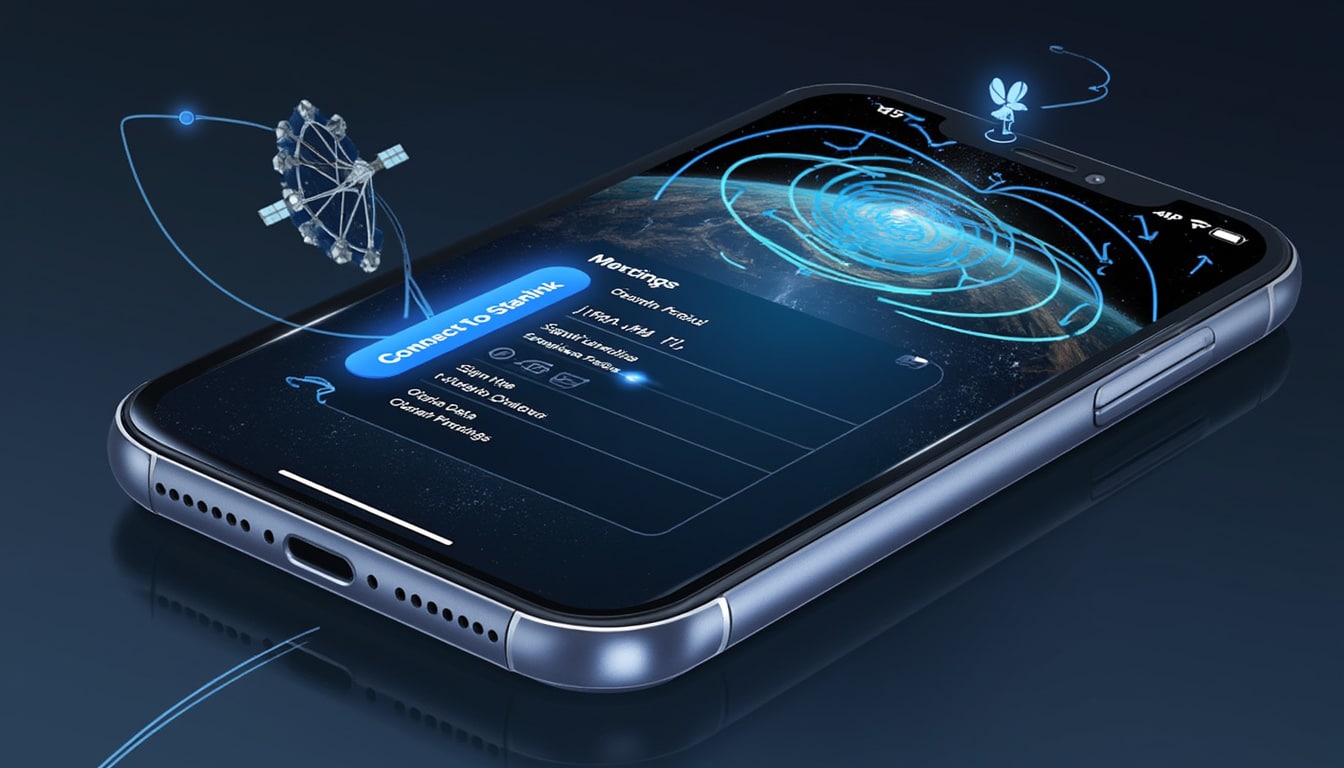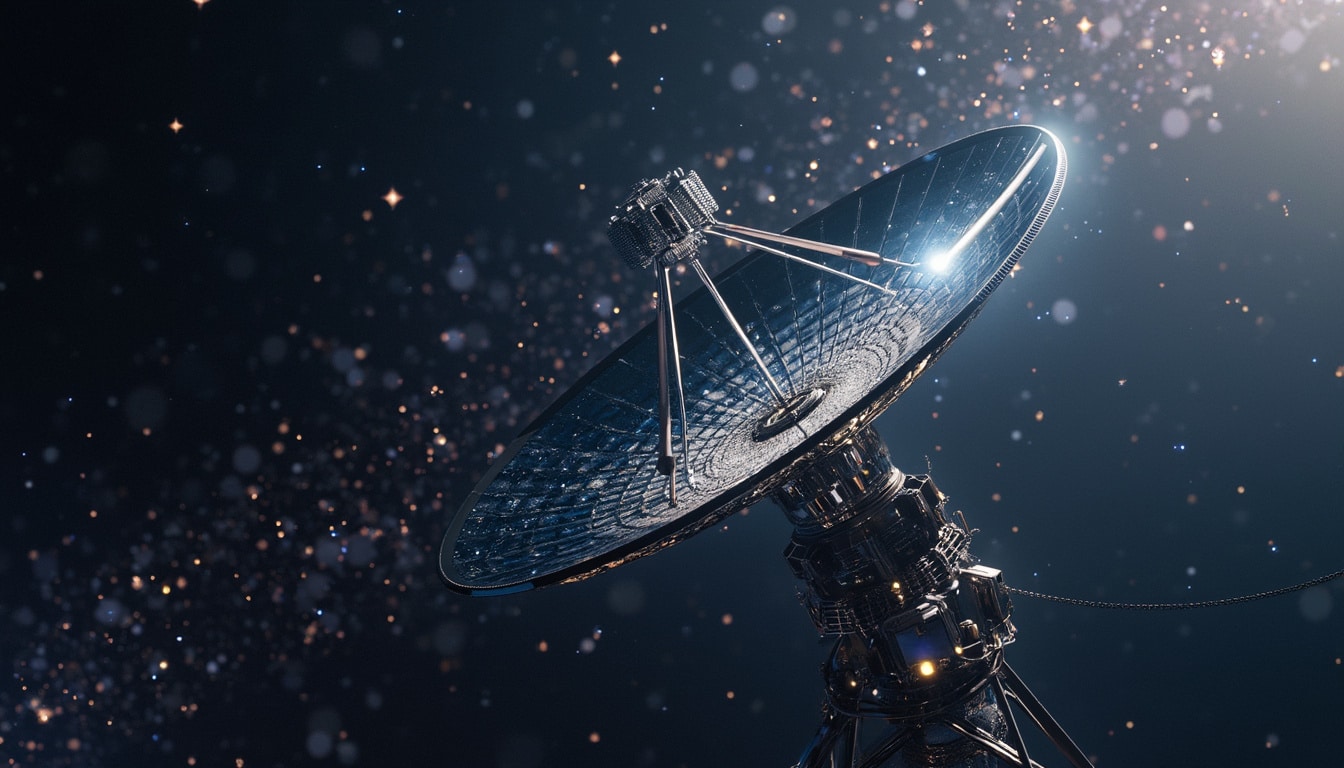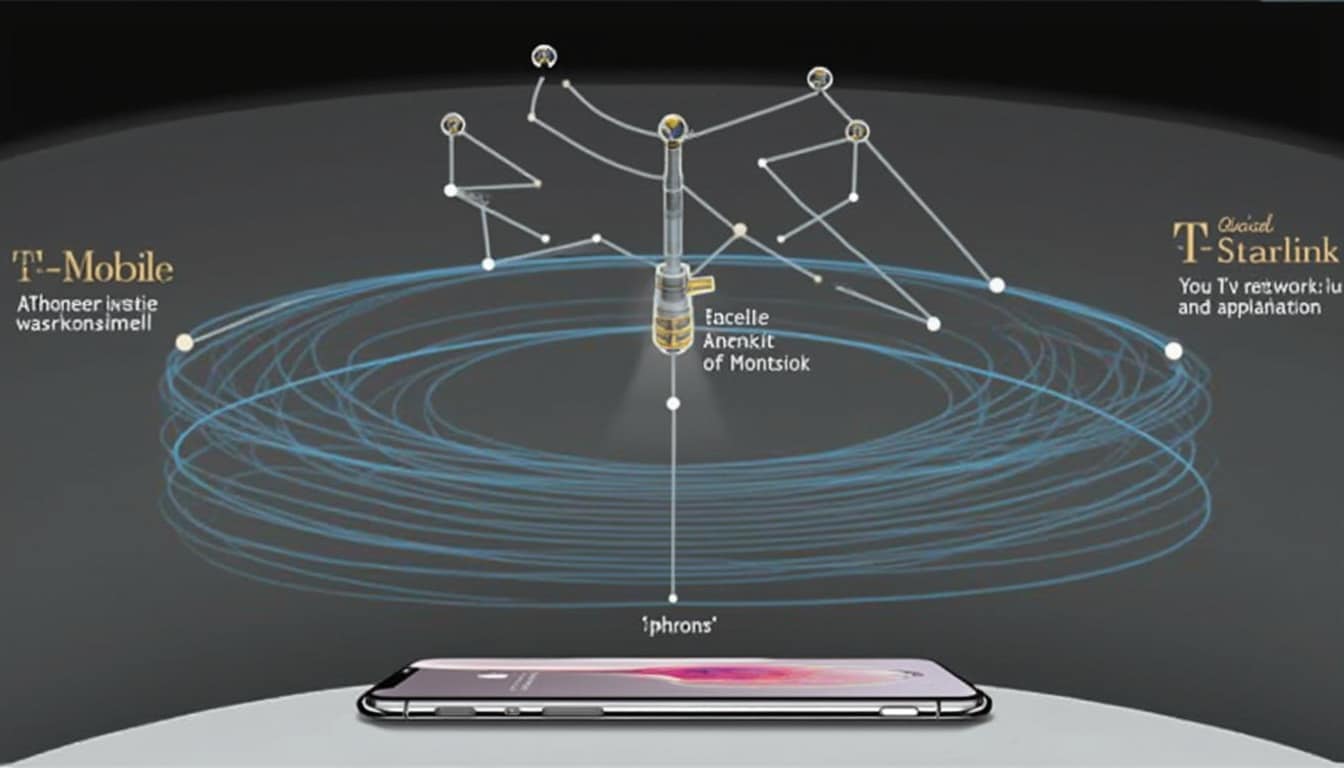The recent iOS 18.3 update for iPhones has stirred a whirlwind of intrigue and speculation in the tech community. Many users have found themselves bewildered by the influx of rumors suggesting that Apple has partnered with SpaceX to integrate Starlink satellite connectivity into their devices. This perceived connectivity promises to revolutionize the way we communicate, offering a backup for cellular networks, especially in remote areas. However, as with any tech-related news, the truth is often layered beneath the noise of social media and sensational headlines.
While it’s easy to get caught up in the excitement of technological advancement, a closer examination of the facts reveals a more nuanced reality. The introduction of Starlink connectivity was not a direct result of a new partnership between Apple and SpaceX; instead, it reflects an existing relationship between SpaceX and T-Mobile. This blog post aims to dissect the myths surrounding this topic and shed light on the practical implications of the latest software updates.
The Roots of the Rumors
The initial rumors began to spiral out of control when users noticed the new features in the iOS 18.3 update. Social media platforms, including TikTok, exploded with videos warning users against upgrading their iPhones, claiming they would inadvertently activate Starlink features. Posts detailed concerns about the implications of having a satellite link potentially ‘installed’ on their devices.
Despite the flood of speculation, official communications from Apple clarifying the update were largely overlooked. News articles published by reputable sources outlined how this new functionality allows iPhone users to toggle satellite connectivity enabled by T-Mobile’s recent beta testing with SpaceX, thereby providing users with alternative communication methods in areas lacking cellular service.
Understanding the T-Mobile and SpaceX Connection
In December, T-Mobile revealed plans to launch a beta program for customers to use Starlink’s satellite network. This partnership is part of a broader effort to extend connectivity beyond traditional cellular boundaries, particularly beneficial for remote locations where cell towers may be sparse. Users can enroll in this program to gain access, but it is exclusively available for T-Mobile customers.
Through the beta testing phase, T-Mobile aims to refine its service, ensuring that users can send messages through Starlink’s satellites when standard cellular connectivity fails. This connection offers an innovative solution for maintaining communication in emergencies or in areas with poor reception.

What Does the iOS 18.3 Update Actually Do?
Upon upgrading to iOS 18.3, users are not greeted with a new Starlink application nor is any immediate connectivity established with Starlink satellites. Instead, the update enables compatibility with T-Mobile’s infrastructure, allowing users with an eligible plan to access Starlink features. For iPhone users, this means the integration of a toggle feature embedded within the settings that allows satellite connectivity options to become visible and manageable within their device’s interface.
To access this feature, users should navigate to Settings > Cellular > [your carrier]. Here, they can enable or disable the satellite functionality based on their preferences.
Interactive Features and Usability
The operational aspect of using Starlink through an iPhone can be viewed as similar to existing emergency SOS functionalities. Users will be able to communicate vital messages albeit on a limited basis during emergencies. Moreover, it becomes clear that those utilizing older iPhone models may not receive this level of accessibility if they haven’t upgraded to the latest devices supporting this new feature.
Premium service plans are likely to come into play alongside the satellite feature, though the exact pricing details remain murky. As advancements in technology continue, pricing structures similar to what we saw with the introduction of 5G may come into effect, shaping the market.

Comparative Perspectives: T-Mobile vs. Other Carriers
While T-Mobile has taken the lead in launching its Starlink beta testing program, other major carriers are also exploring similar satellite connectivity options. Verizon and AT&T, for example, have secured partnerships with AST SpaceMobile, which focuses on providing broader satellite coverage through its network. However, unlike T-Mobile’s announced timeline for beta testing, details for these projects remain elusive.
Competitive Edge in Connectivity
Being the first carrier to offer Starlink satellite access, T-Mobile positions itself advantageously in the competitive landscape. This initiative not only enhances communication options for its customers but also sets a benchmark for rival companies to follow. The accessibility of satellite communication for everyday users marks a game-changing shift in how we envision connectivity beyond terrestrial networks. Rapid advancements in satellite technology promise to reshape the landscape of mobile communication, and T-Mobile stands at the forefront of this revolution as they prepare for full-launch service in the upcoming years.
In contrast, other carriers are still in the initial stages of development and research in the same market segment. As various technological collaborations continue to build momentum, the race for satellite connectivity is steadily heating up.
Debunking Myths: Starlink Isn’t Installed on All iPhones
Rumors of automatic installations of Starlink capabilities on all iPhones paired with the iOS 18.3 update are unequivocally inaccurate. The update does not include any Starlink apps or facilitate instant access to Starlink’s network. Instead, the update simply enhances compatibility with existing satellite capabilities offered by T-Mobile. These rumors are a testament to how quickly misinformation can spread, especially when technology intersects with popular brands like Apple and SpaceX.
Understanding Emergency Services
Furthermore, Apple also has its own Emergency SOS service utilizing Globalstar’s network, which provides critical messaging capabilities without needing cellular service. This service remains intact and can be utilized alongside any potential Starlink connection through T-Mobile.
For users of the iPhone 14, iPhone 15, and iPhone 16, these devices already possess satellite communication functions. However, with the introduction of T-Mobile’s service, they will soon explore new possibilities regarding satellite connectivity which will be simple and efficient relative to prior experiences.

Future of Satellite Communications and iPhones
The integration of Starlink satellite connectivity into select iPhone models signifies a pivotal moment in mobile technology. With user expectations leaning towards integrated access to remote communication capabilities, solutions like these are anticipated to flourish. The landscape of satellite communications is evolving rapidly. By embedding these functionalities within widely adopted devices like the iPhone, Apple and its partners lay the groundwork for future advancements in the realm of satellite communications.
Is Satellite a Game Changer?
Given the continually increasing demand for connectivity solutions in remote locations and potential disasters, the implementation of satellite services represents a promising development. The anticipation for more robust satellite features will likely boost consumer interest among two main demographics: those seeking emergency solutions and users in rural areas.
Furthermore, as user habits evolve with the increasing dependency on digital communication, technology companies must continually push forward innovations that meet these needs. The competition among carriers in the space for satellite capabilities adds an exciting twist to the race for connectivity excellence.
Public Perception and Acceptance of Satellite Services
The buzz surrounding the possibility of Starlink on iPhones has generated a complex reaction from the public. Excitement coexists with skepticism, as individuals weigh the implications of such technology in daily life. On the one hand, tech enthusiasts foresee a future where satellite connectivity becomes ubiquitous, bridging gaps between remote and urban areas seamlessly.
Navigating Concerns and Hype
Conversely, skepticism remains regarding the practical applications and potential costs associated with these services. Will consumers need to upgrade their plans significantly, and will this added feature prove valuable in the long run? As discussions continue, it is evident that the communication landscape is on the brink of a substantial transformation.
Public perception will ultimately sway upon the actual performance and accessibility of these satellite services when launched. Ensuring clarity regarding available features, pricing, and service plans will be essential in gaining user trust and maintaining transparency as the technology evolves.

The convergence of technology, communication, and satellite capabilities brings forth tremendous opportunities. As the industry progresses, the collaboration between Apple, T-Mobile, and SpaceX could lay the foundations for extensive connectivity solutions that reshape our interaction with the world. The expectation is that these innovations will lead us into an era where connectivity remains uninterrupted, bridging the digital divide one satellite at a time.




Leave a Reply